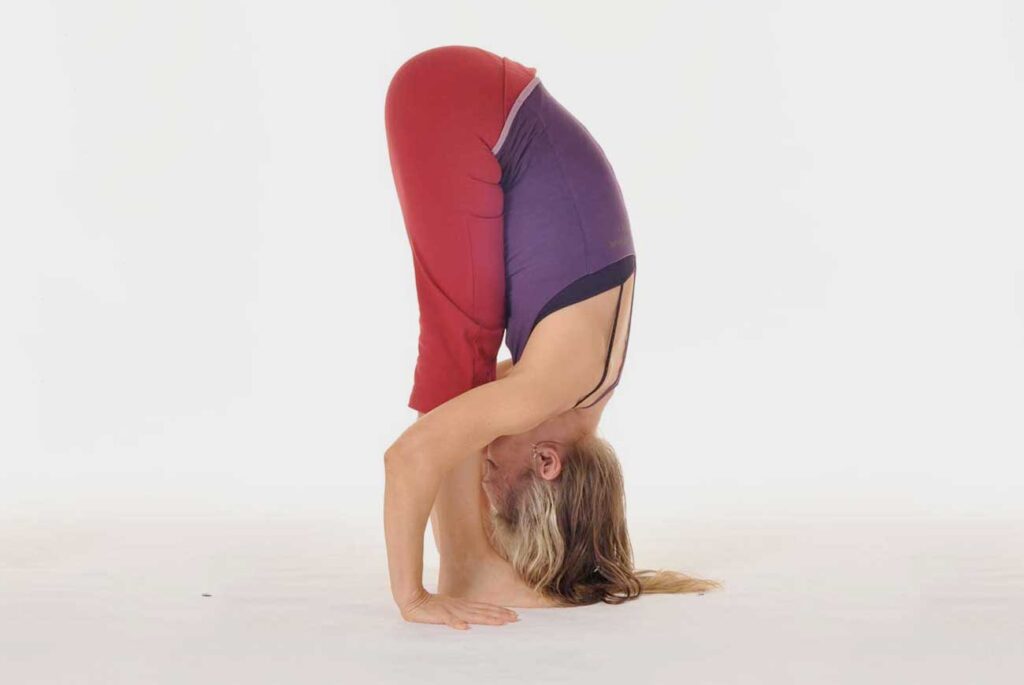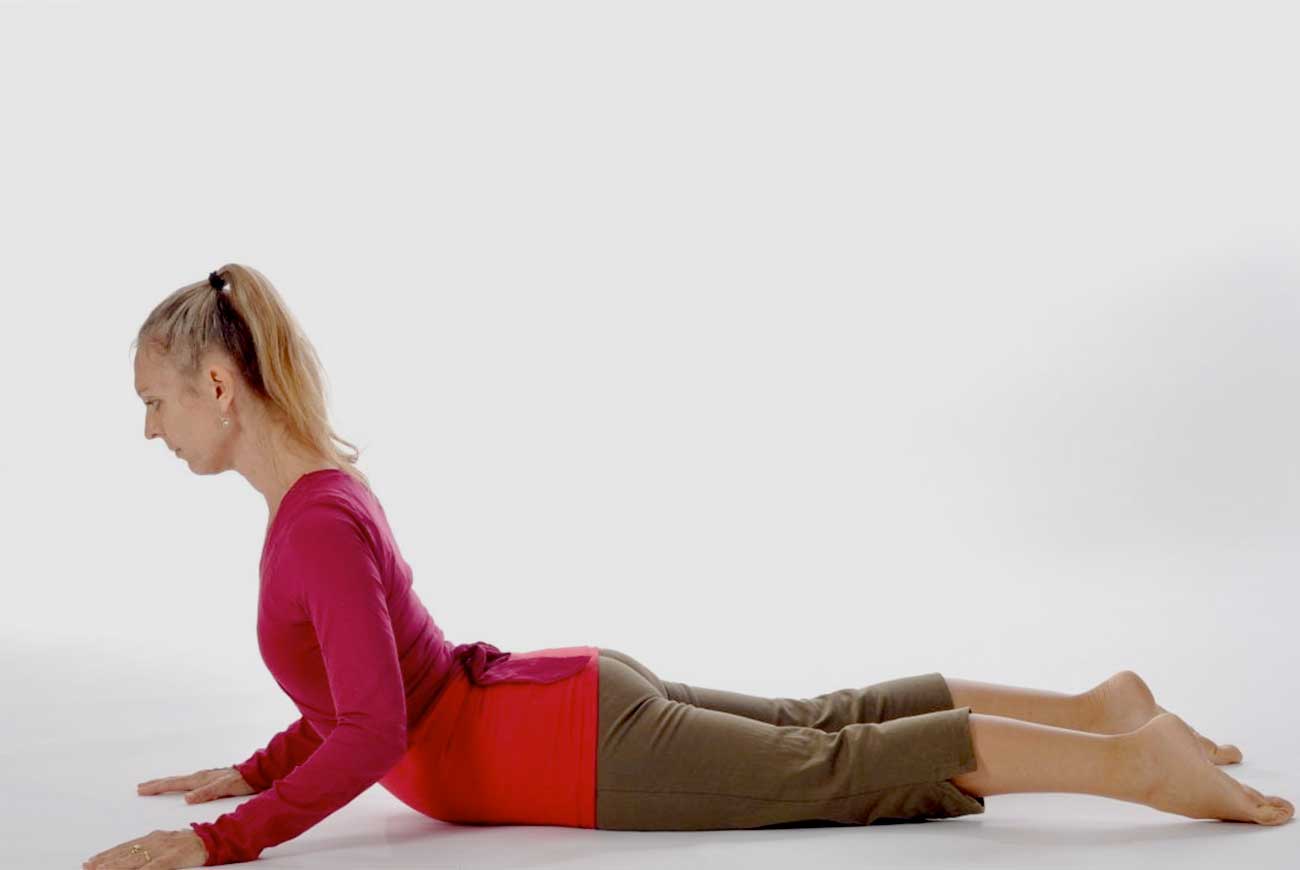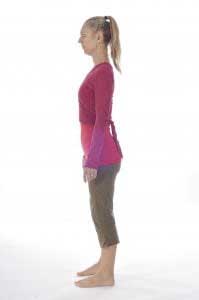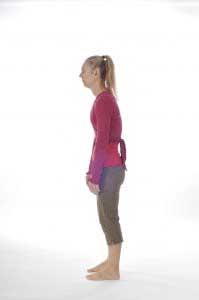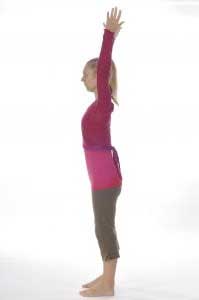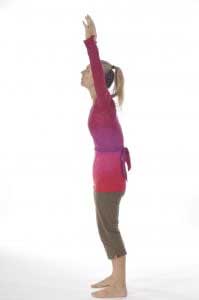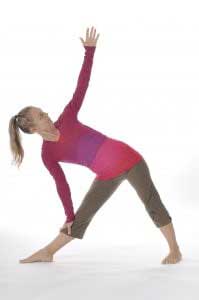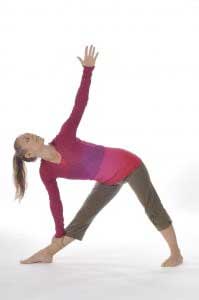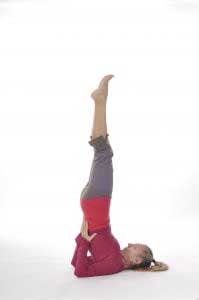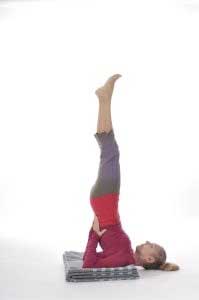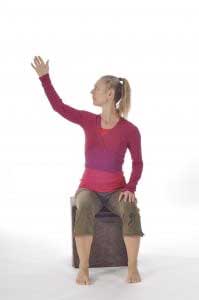This article first appeared in Australian Yoga LIFE magazine issue 52 September 2015 and is reproduced here with kind permission of AYL.
Neck dysfunction is one of the most commonly treated conditions by physiotherapists. Poor posture whilst standing or sitting subjects the spine to abnormal stress. Over time this can lead to structural changes in the spine, including degeneration of discs and joints, lengthening or shortening of the supportive ligaments and muscles, and wear and tear of cartilage. All of these structural changes can lead to pain in the neck and shoulders, headaches, and loss of the expected comfortable range of movement of the neck. Whilst a regular practice of intelligently chosen postures can completely reverse neck dysfunction, many practitioners are unknowingly aggravating already poor posture with their yoga practice, actually increasing neck strain.
Anatomy of the Neck
The neck, or cervical spine, has 7 vertebrae, numbered from C1 (the atlas, on which the skull rests) down to C7 at the base of the neck. Maximum movement in all of the possible directions available takes place at the first joint in the neck, C6-7.
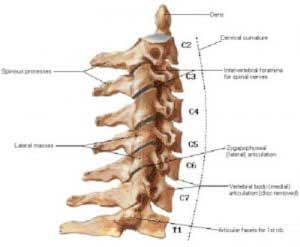
Cervical-Vertebrae
Healthy Movements of the neck
A healthy neck is the most mobile part of the spine in all possible directions. The following movements are possible:
- Flexion-bending the head forward
- Extension-tipping the head up and back
- Lateral bend-tilting the head to the side
- Rotation-turning the head.
Some movement of the neck will occur along with the movement of the spine, as passive movement. Independent movements of the neck are also possible.
Due to muscle tightness, postural deviations or repetitive activities, any of these possible movements may become compromised in terms of:
- Ease
- Range of movement
- Direction of movement
Causes of Neck Dysfunction
Poor posture, including Forward Head Placement, is one of the most common causes of neck dysfunction and pain. The structure of the neck is designed to support the head in the same way that a golf tee supports the golf ball. The head, placed directly on top of the column of neck vertebrae, (so that the crown of the head is in-line with the hole of the ear) should transfer it’s weight directly down through the axis of the cervical spine, so that there is no extra work for the spinal muscles and ligaments to do to carry this weight. However, due to long sitting with ‘poke neck’ position, poor sleeping position, past injury, hereditary bad posture and other postural abnormalities leading to a rounded upper back and a stiff thoracic spine, the neck leans forward instead of rising straight up above the rest of the spine. For every inch that the neck leans forward from it’s upright ideal, the weight of the head effectively gains 4.5 kilos! This is like having a bowling ball hanging around your neck all day! The muscles in the upper back and neck have to work much harder to keep the head in a position in which the eyes are still forward facing. With the muscles in constant contraction to achieve this, pressure is added to the nerves at the base of the skull, which can cause headaches.
When spinal tissues are subject to bearing extra weight over a sustained period, they are damaged in a way that takes time to reverse. The normal curve of the neck is flattened-this leads to disc compression, with resulting wear and tear and possible early arthritis. If the condition goes uncorrected, long term chronic conditions such as pinched nerves and blood vessels in the neck and shoulder area, chronic neck strain and fibromyaligia are all possible results.
1. Normall Head Placement
2. Forward Head Placement
Relationship of the Neck to Thoracic spine and Upper Limbs
So- the neck is designed to be at the top of an upright column. If there is any deviation to the shape of the column lower down, the placement, and functionality of the neck will be compromised. Most commonly, if upper back is rounded, the neck will lean forward, the head literally ‘weighs more’, and movements of the neck will be restricted.
If the upper back is rounded, it is also usually stiff, and unable to extend (bend backward) easily. For someone with a rounded upper back, even being upright would be like doing a backbend. What happens in the body when it is asked to do a movement which is difficult-or one that it is not used to doing? It compensates, by doing a movement it can do more easily, that ends in a similar result.
The upper limbs are a projection of the neck in evolutionary terms. When we use the arms, we affect the upper spine and neck. In a healthy body, when we raise the arms, the chest opens, and the thoracic spine extends (flattens, or hollows in at the back). However, if the thoracic spine finds it hard to extend, what happens instead? The head tips back. The chin lifts, replacing the lifting work that should be happening at the chest. Whenever someone with a tight thoracic spine asks it to extend, unless they are mindful, compensation occurs in the neck-the neck extends instead. This continual ‘hinging’ in the neck only adds to neck strain, and does nothing to reverse the problem of a rounded and stiff thoracic spine.
Signs of Neck /Upper Back Tightness in Yoga Practice
In a yoga setting, unless students make a conscious effort not to do so, the neck will compensate for the lack of extension in the thoracic spine (ie the head will tip back and the chin will lift) in all chest opening and back bending movements, rendering these postures useless for alleviating the rounded back posture as they are intended to do!
In standing postures such as Mountain Pose (Tadasana) raising the arms and Warrior 1 (Virahabdrasana I) Pose, and in prone back bends such as Cobra (Bhujangasana) and Upward Dog (Urdvha Mukha Svanasana), the chin will lift. In supine backbends such as Bridge Pose, (Setu Bandha Sarvangasana) as the chest lifts, the chin will lift and the head will tip back, to prevent the stretch at the back of the neck that the pose truly requires. Even in Corpse Pose (Savasana) without neck or head support, the head will need to tip back so that it rests on the floor, creating an arch at the back of the neck big enough to slide a hand under.
Repetitive movements in the same direction strengthen nerve and muscle pathways to move that way more readily. We know this-if we practice a particular posture regularly, it becomes easy. Of course it would make sense to limit the length of periods of sitting, and to change the ergonomics of the work station to encourage a position whereby the head is held directly on top of the spine (having the top third of the computer screen at or above eye-level facilitates this). However, the repetition of forward neck movements, with the neck compensating for a lack of movement in the thoracic spine in yoga practice will also add to the problem-deepening the ‘groove’, of the habitual movement, in an unhealthy direction.
Retraining Movements for a Healthier Neck
Avoid ‘extra’ neck movements-move neck with thoracic spine
Spinal Extension
The first step to re-training for a healthier pattern of movement is to limit the extra compensatory movements of the neck. Whenever you let your head tip back instead of the thoracic spine extending, you let the thoracic spine off the hook-and you increase neck strain!
In spinal extensions (backbends) wherever possible, keep the chin tilted down and in, and the back of the neck long. Think about initiating the movement at the heart centre-which should lift-not the chin.
3. Tadasana with raised arms – correct
4. Tadasana with raised arms – incorrect
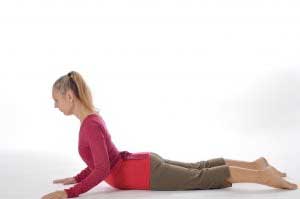
5. Cobra – Correct
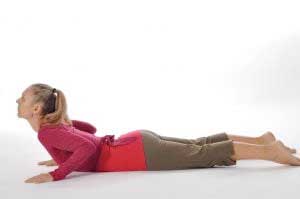
6. Cobra – Incorrect
Twists
Postures such as Trikonasana, where without good neck alignment, the head will tend to drop back due to gravity, and is then asked to twist, are ring ins for neck strain. To avoid adding load to the neck in standing and seated twists, first make sure the chin is retracted, with the back of the neck long, before you begin! Then, think about the twist beginning at the navel, then at the heart centre-keeping the chin in line with the heart, so that it is the rest of the spine that has to do the twist. Then only turn the head a few degrees past where the heart centre is facing-and of course, if there is any strain in the neck, untwist to a position that is comfortable!
7. Trikonasana – Correct
8. Trikonasana – Incorrect
Neck Flexion
The 90 degree flexion (forward bend) of the neck that is required to execute an upright Shoulder Stand (Sarvangasana) without props is too much for most people nowadays, and will tend to over-stretch the ligaments at the back of the neck. Unless you have perfect spinal alignment, some props or modifications will be necessary to prevent neck strain due to over-flexion. For a more upright posture, without the need for that 90 degree flexion of the neck, use a couple (or more) blankets beneath the shoulders. This raises the height of the shoulders by a couple of inches, allowing a gentler slope of the neck. Alternatively, allow the legs to slope forward and the hips to slope back-which has the same effect.
9. Shoulder Stand without blankets neck overstretched
10. Shoulder stand with blankets neck relaxed
Weight Bearing
It should be common sense-but if the position of the neck deviates in an upright standing position creating strain from bearing the weight of the head, it will not be well placed to bear the weight of the entire body in a posture such as Headstand (Sirsasana). No Headstand unless you have perfect spinal alignment-if you want to avoid aggravating neck strain.
Alleviating Neck Strain with Yoga Practice
Remove weight bearing work for the neck.
As with all strain injuries, if there is acute pain, stretching and strengthening will not help; what is needed is rest-ie to remove weight bearing work.
The work the neck has to do is the bear the weight of the head in all seated and standing upright postures. The only positions in which the weight of the head is not born by the neck is in supine postures, or deep forward bends in which the weight of the head hangs.
Lying in Savasana for 10 minutes-with appropriate support for the head to hold the neck in line with the rest of the spine, chin tilted down and in-will open up space in the vertebrae at the back of the neck, relax the muscles, and due to gravity, encourage a more congruent alignment between the thoracic spine and the neck.
Use arm movement to encourage thoracic opening
From this position simple arm movements can be used in synchrony with breath to begin opening the thoracic spine. With an Inhale, raise the right arm up and back, allowing the thoracic spine to extend, and exhale to lower it back down. Then repeat for the left. This is one round. Practice 6 rounds.
Gentle Mobility for the Neck
When working to retrain healthy movements of the neck, it is important to use the focus of the eyes in synchrony with the movements of the head and neck. The nervous system, the organs of the senses and the muscular system are hard-wired to work together. Especially in the case of natural head and neck movements, the gaze of the eyes is always involved.
Using simple single arm movement taking the hand up and out, whilst following the hand with the gaze of the eyes to within comfort level brings back the ability to move the thoracic spine, neck, and eyes together in a seamless, healthy manner.
Hand and eye movement seated.
11. Inhale and you lift the arm up and out follow hand with eye gaze
12. Exhale as you place arm back down follow hand with eye gaze
Repeat x 6
To Summarise…
Prevention
- Avoid sitting for long periods
- Whilst sitting try to retract chin-having top third of computer screen higher than eye level facilitates this
In Regular Yoga practice
- Avoid compensatory movements of the neck
- Keep chin in during spinal extensions (backbends)
- Don’t over-twist the neck-chin in line with heart
- Try to initiate back bending and twisting movements from thoracic spine
- Don’t over-flex the neck-blankets or modify Shoulder Stand
In the Acute Phase (pain)
REST/ Relax neck-no weight bearing-supine with neck support.
Open thoracic spine- Savasana with neck support, single arm movement.
In the Mobility Phase
Combine breath, thoracic and neck movements with hand and eye movements.
